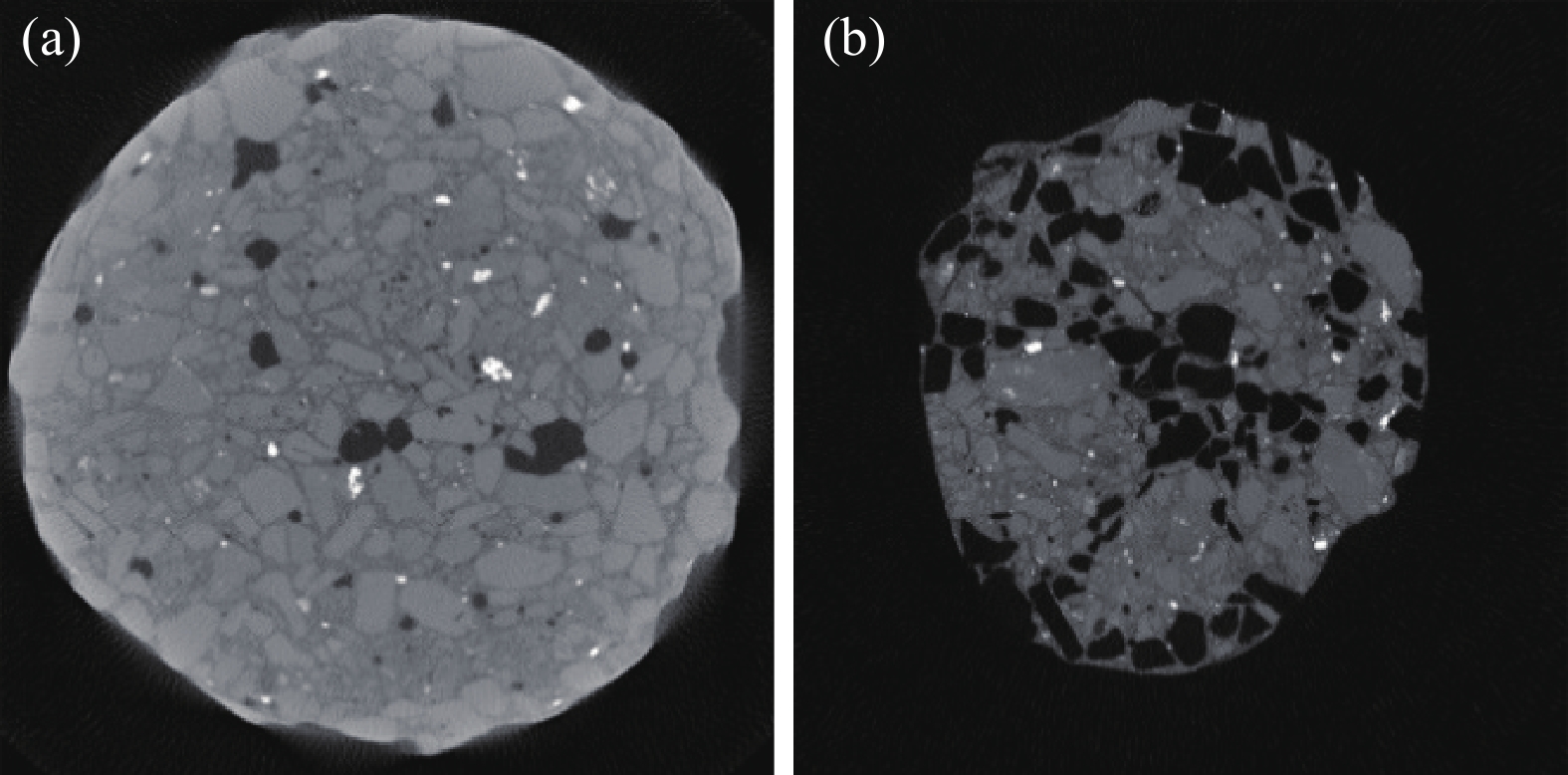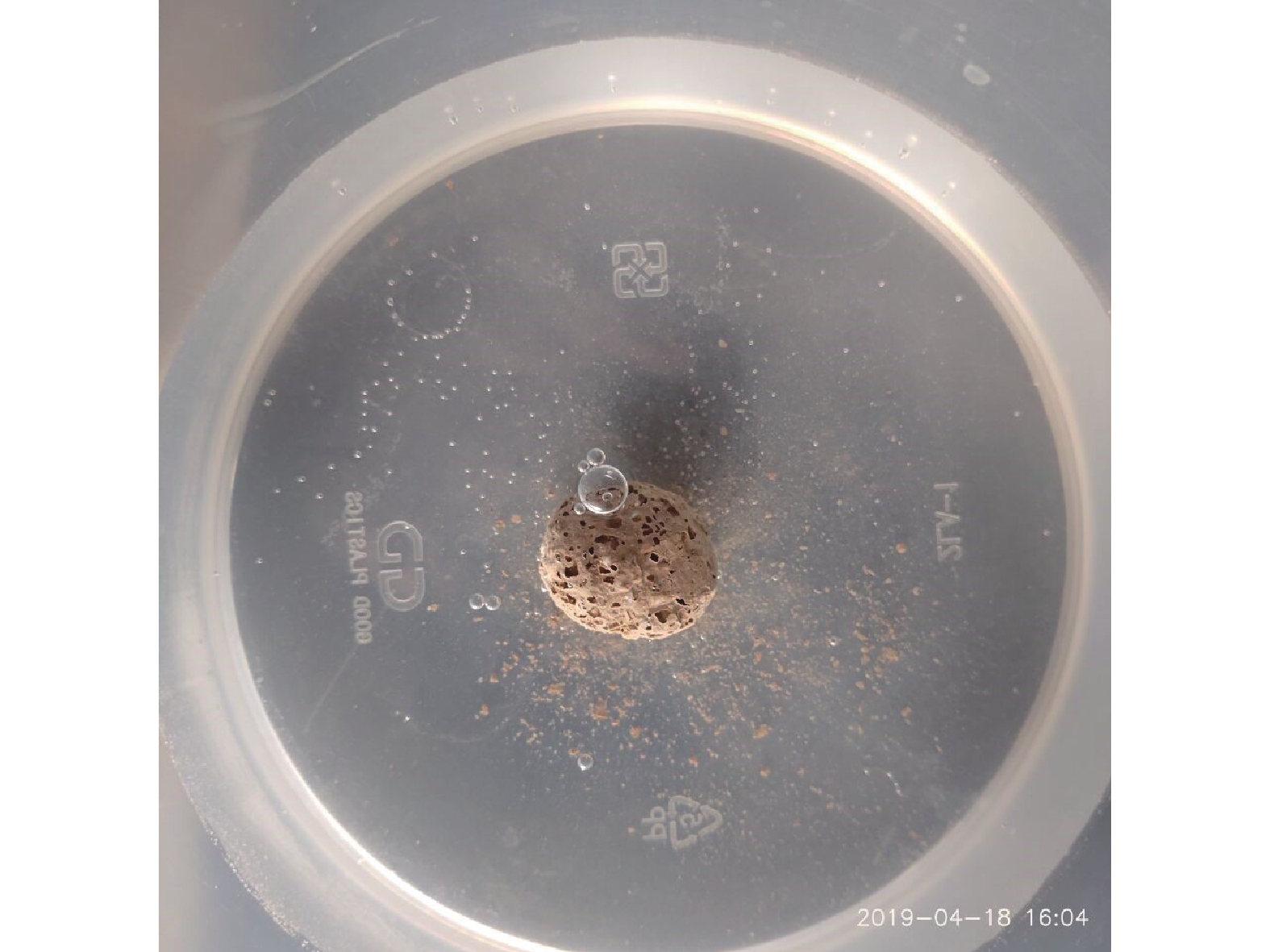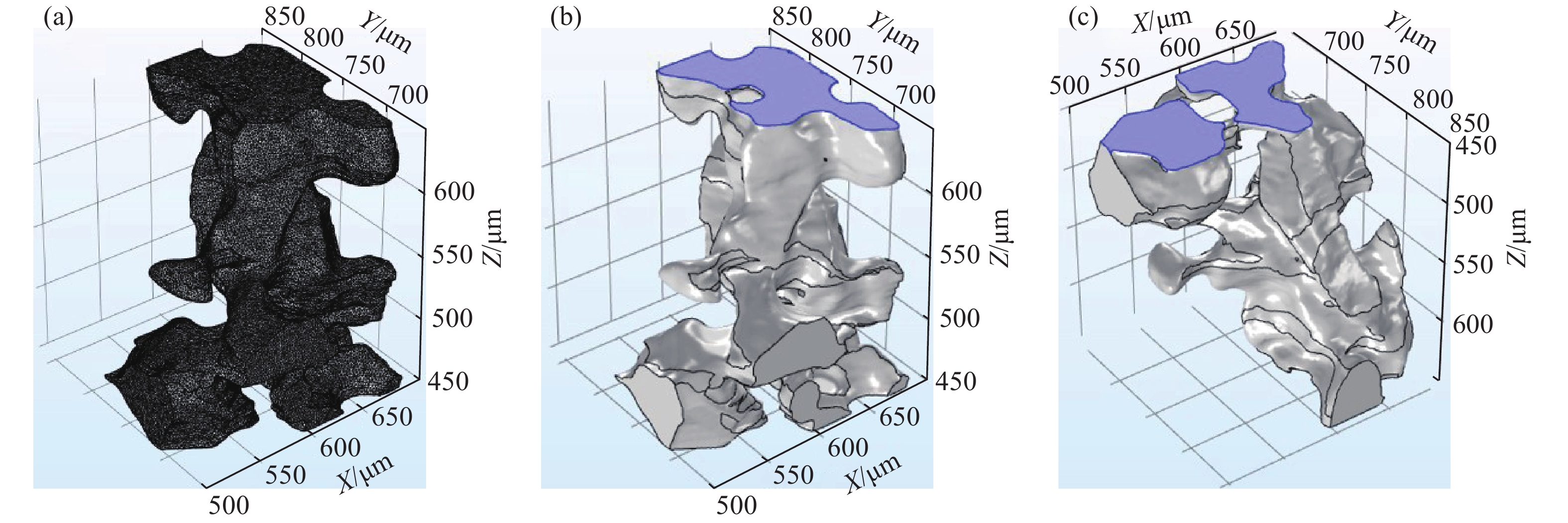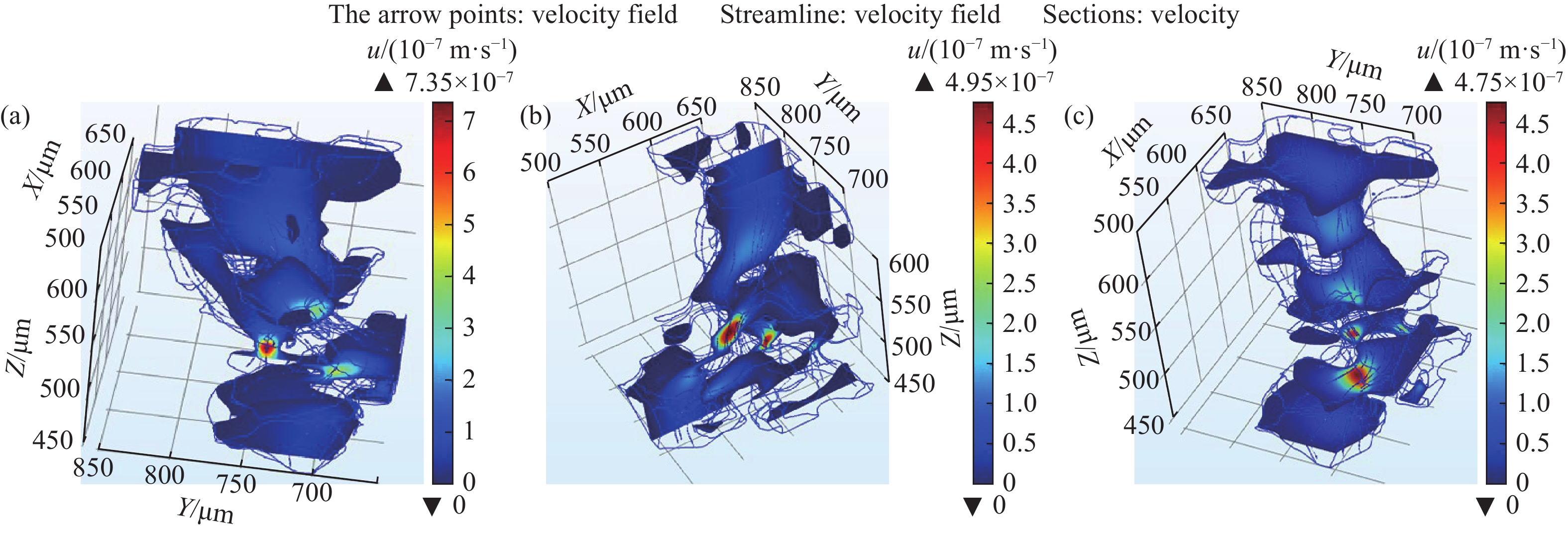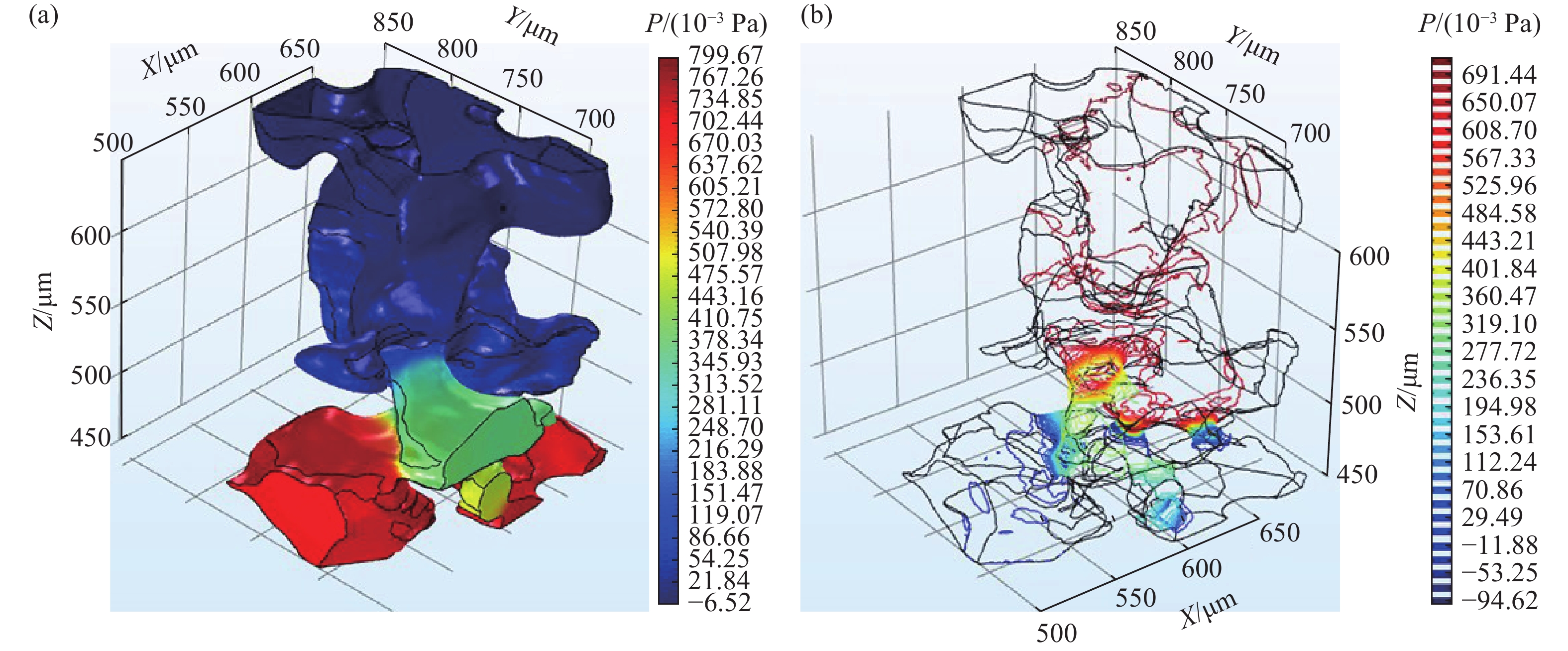Pore model reconstruction of copper sulfide ore agglomerate and simulation of solution seepage
-
摘要: 以次生硫化銅礦粉為原料,添加黏結劑、氯化鈉制備礦粒,并借助CT掃描技術、圖像處理及三維重構方法,開展了單個礦粒浸出試驗,探究了溶浸前后礦粒內部的孔隙變化;運用COMSOL Multiphysics模擬仿真軟件,構建了溶液在孔隙通道中流動的仿真模型。結果表明:經過一周時間的溶浸,礦粒內部孔隙的數目、平均體積、平均表面積及孔隙平均等效直徑分別增長了99%、151%、223%和90%,孔隙率增長了4倍,孔隙連通度增長了近2倍。在孔隙通道較狹窄的區域和底部區域,溶液的流速、壓力急劇增加,對礦粒結構的穩定性產生較大影響。Abstract: Bioleaching technology, a method used in mining, utilizes organisms or microorganisms to dissolve and leach useful components from ore. This technology is applied widely in many countries in mining and production of various metals. Although considerable economic benefits have been obtained with the help of bioleaching technology, this technology faces many challenges. For example, as the leaching process progresses, the permeability of the ore heap is worsened from the presence of fine particles and muddy ore. As such, improving heap permeability is a key focus in the field of leaching mining technology. Agglomeration technology, an effective method for improving the permeability of ore heaps, involves crushing the ore and agglomerating it with binders before leaching, which alters the structure of the ore, especially ore powder. The resulting granular structure provides space for the flow of the solution and greatly improves the permeability of the leaching system. The pore structure is constantly changing as the leaching process progresses, which affects the seepage of the solution and even the effect of leaching the ore. In this study, leaching tests were conducted using single-ore granulation of secondary copper sulfide ore powder, binders, and NaCl. Changes in the pore structure during leaching were investigated using X-ray computerized tomography, digital image processing, and three-dimensional reconstruction methods. In addition, COMSOL Multiphysics simulation software was used to construct a simulation model of the flow of the solution in the pore channels. The results reveal that the number, average volume, average surface area, and average equivalent diameter of pores inside the granulated ore increase respectively by 99%, 151%, 223%, and 90%. In addition, the porosity increases fourfold and the pore connectivity nearly triples. The flow velocity and pressure of the solution was found to increase sharply as the solution flows through the narrow and bottom areas of the pore channels, which has a great impact on the stability of the ore granulation structure.
-
Key words:
- copper sulfide ore /
- agglomeration technology /
- CT technology /
- pore evolution /
- numerical simulation
-
表 1 礦樣主要元素質量分數
Table 1. Mass fractions of major elements in mineral samples
% Elements Cu Fe S CaO MgO Al2O3 SiO2 Mass fraction 0.70 1.67 1.10 0.30 0.04 5.19 91.00 表 2 銅物相分析結果(質量分數)
Table 2. Cu phase analysis results of mineral samples
Phase Mass fraction/% Copper oxide 0.04 Primary copper sulfide 0.05 Secondary copper sulfide 0.60 Combined copper 0.01 Total 0.70 表 3 礦粒孔隙參數變化
Table 3. Variation of pore parameters
Parameter Pore number Mean pore volume/(108 μm3) Average pore surface area/(106 μm2) Average equivalent pore diameter/μm Before leaching 288 1.71 1.16 304 After leaching 575 4.29 3.75 579 Growth rate/% 99 151 223 90 表 4 礦粒孔隙率及孔隙連通度變化
Table 4. Evolution of porosity and pore connectivity
Parameter Porosity/% Growth rate/% Porosity connectivity/% Growth rate/% Before leaching 3.20 400 29.96 195 After leaching 16.00 88.26 中文字幕在线观看表 5 構建模型的關鍵參數
Table 5. Key parameters used in the model
Parameters Symbol Value Density/(kg·m?3) ρ 1100 Temperature/K T 298.13 Dynamic viscosity/Pa·s μ 0.9 Initial pressure/Pa P0 0.715 -
參考文獻
[1] Akinci G, Guven D E. Bioleaching of heavy metals contaminated sediment by pure and mixed cultures of Acidithiobacillus spp. Desalination, 2011, 268(1-3): 221 doi: 10.1016/j.desal.2010.10.032 [2] Zeng J, Li J, Gou M, et al. Effective strategy for improving sludge treatment rate and microbial mechanisms during chromium bioleaching of tannery sludge. Process Biochem, 2019, 83: 159 doi: 10.1016/j.procbio.2019.05.019 [3] Yin S H, Chen W, Chen X, et al. Bacterial-mediated recovery of copper from low-grade copper sulfide using acid-processed rice straw. Bioresource Technol, 2019, 288: 121605 doi: 10.1016/j.biortech.2019.121605 [4] Yin S H, Wang L M, Wu A X, et al. Progress of research in copper bioleaching technology in China. Chin J Eng, 2019, 41(2): 143尹升華, 王雷鳴, 吳愛祥, 等. 我國銅礦微生物浸出技術的研究進展. 工程科學學報, 2019, 41(2):143 [5] Petersen J. Heap leaching as a key technology for recovery of values from low-grade ores— —a brief overview. Hydrometallurgy, 2016, 165: 206 doi: 10.1016/j.hydromet.2015.09.001 [6] Chen W, Yin S H, Qi Y, et al. Effect of additives on bioleaching of copper sulfide ores. J Central South Univ Sci Technol, 2019, 50(7): 1507陳威, 尹升華, 齊炎, 等. 添加劑對硫化銅礦生物浸出規律的影響. 中南大學學報:自然科學版, 2019, 50(7):1507 [7] Zeng Y J, Li J H, Li T Q, et al. Technical application of agglomerated acidic heap leaching of clay bearing uranium ore in China. Uran Min Metall, 2002, 21(4): 182 doi: 10.3969/j.issn.1000-8063.2002.04.003曾毅君, 李建華, 李鐵球, 等. 中國含泥鈾礦酸法堆浸制粒技術的應用. 鈾礦冶, 2002, 21(4):182 doi: 10.3969/j.issn.1000-8063.2002.04.003 [8] Liu X X, Wang L, Xie J P, et al. Experimental study on column leach of low grade copper oxide. Min Metall Eng, 2016, 36(1): 83 doi: 10.3969/j.issn.0253-6099.2016.01.021劉新星, 王龍, 謝建平, 等. 低品位氧化銅礦柱浸試驗研究. 礦冶工程, 2016, 36(1):83 doi: 10.3969/j.issn.0253-6099.2016.01.021 [9] Chen W, Yin S H, Wu A X, et al. Bioleaching of copper sulfides using mixed microorganisms and its community structure succession in the presence of seawater. Bioresour Technol, 2020, 297: 122453 doi: 10.1016/j.biortech.2019.122453 [10] Zhou A, Zhang Q, Bai R N, et al. Characterization of coal micro-pore structure and simulation on the seepage rules of low-pressure water based on CT scanning data. Minerals, 2016, 6(3): 78 doi: 10.3390/min6030078 [11] Tang B W, Gao S, Wang Y G, et al. Pore structure analysis of electrolytic manganese residue based permeable brick by using industrial CT. Construct Build Mater, 2019, 208: 697 doi: 10.1016/j.conbuildmat.2019.03.066 [12] Bell S L, Welch G D, Bennett P G. Development of ammoniacal lixiviants for the in-situ leaching of chalcopyrite. Hydrometallurgy, 1995, 39(1-3): 11 doi: 10.1016/0304-386X(95)00022-9 [13] Yin S H, Chen W, Liu J M, et al. Agglomeration experiment of secondary copper sulfide ore. Chin J Eng, 2019, 41(9): 1127尹升華, 陳威, 劉家明, 等. 次生硫化銅礦制粒試驗. 工程科學學報, 2019, 41(9):1127 [14] Nosrati A, Quast K, Xu D F, et al. Agglomeration and column leaching behaviour of nickel laterite ores: effect of ore mineralogy and particle size distribution. Hydrometallurgy, 2014, 146: 29 doi: 10.1016/j.hydromet.2014.03.004 [15] Yin J S, He R G, Shen K N. Commercial tests of tailing briquetting-heap leaching in a certain gold mine. Gold, 2007, 28(2): 42 doi: 10.3969/j.issn.1001-1277.2007.02.012尹江生, 賀銳崗, 沈凱寧. 某金礦選礦廠尾礦制粒堆浸工業試驗. 黃金, 2007, 28(2):42 doi: 10.3969/j.issn.1001-1277.2007.02.012 [16] Quaicoe I, Nosrati A, Skinner W, et al. Agglomeration and column leaching behaviour of goethitic and saprolitic nickel laterite ores. Miner Eng, 2014, 65: 1 doi: 10.1016/j.mineng.2014.04.001 [17] Yin S H, Wang L M, Chen X, et al. Seepage law of solution inside ore granular under condition of different heap constructions. J Central South Univ Sci Technol, 2018, 49(4): 949尹升華, 王雷鳴, 陳勛, 等. 不同堆體結構下礦巖散體內溶液滲流規律. 中南大學學報: 自然科學版, 2018, 49(4):949 [18] Yin S H, Wu A X, Hu K J, et al. Visualization of flow behavior during bioleaching of waste rock dumps under saturated and unsaturated conditions. Hydrometallurgy, 2013, 133: 1 doi: 10.1016/j.hydromet.2012.11.009 [19] Xue Z L, Zhang Y Z, Liu Z Y, et al. Effects of ore shape on pore structure and seepage velocity field in heap leaching. China Min Mag, 2018, 27(12): 128薛振林, 張有志, 劉志義, 等. 礦石形狀對浸堆結構及滲流場影響機制. 中國礦業, 2018, 27(12):128 [20] Liu C. Evolution of the Pore Structure and Flow in Granular Ore Heaps for Copper Oxides Acid Leaching[Dissertation]. Beijing: University of Science and Technology Beijing, 2017劉超. 酸浸條件下氧化銅礦巖散體孔隙結構及滲流演化規律[學位論文]. 北京: 北京科技大學, 2017 [21] Wu A X, Wang S Y, Yang B H. Effect of particle structure on permeability of leaching dump. Min Res Dev, 2011, 31(5): 22吳愛祥, 王少勇, 楊保華. 堆浸散體顆粒結構對溶浸液滲流規律的影響. 礦業研究與開發, 2011, 31(5):22 [22] Lo A, Nosrati A, Addai-Mensah J. Particle and pore dynamics under column leaching of goethitic and saprolitic nickel laterite agglomerates. Adv Powder Technol, 2016, 27(6): 2370 doi: 10.1016/j.apt.2016.11.009 [23] Yang B H, Wu A X, Miao X X. 3D micropore structure evolution of ore particles based on image processing. Chin J Eng, 2016, 38(3): 328楊保華, 吳愛祥, 繆秀秀. 基于圖像處理的礦石顆粒三維微觀孔隙結構演化. 工程科學學報, 2016, 38(3):328 [24] Bird M B, Butler S L, Hawkes C D, et al. Numerical modeling of fluid and electrical currents through geometries based on synchrotron X-ray tomographic images of reservoir rocks using Avizo and COMSOL. Comput Geosci, 2014, 73: 6 doi: 10.1016/j.cageo.2014.08.009 [25] Wu A X, Yin S H, Yao B H, et al. Study on preferential flow in dump leaching of low-grade ores. Hydrometallurgy, 2007, 87(3-4): 124 doi: 10.1016/j.hydromet.2007.03.001 [26] Lai C S, Yu W Z, Chen S Y. The parameters affecting on heap leaching of gold ore. Multipurpose Utilization Miner Resour, 2013(6): 9賴才書, 余文章, 陳森煜. 影響金礦堆浸工藝的因素. 礦產資源綜合利用, 2013(6):9 -




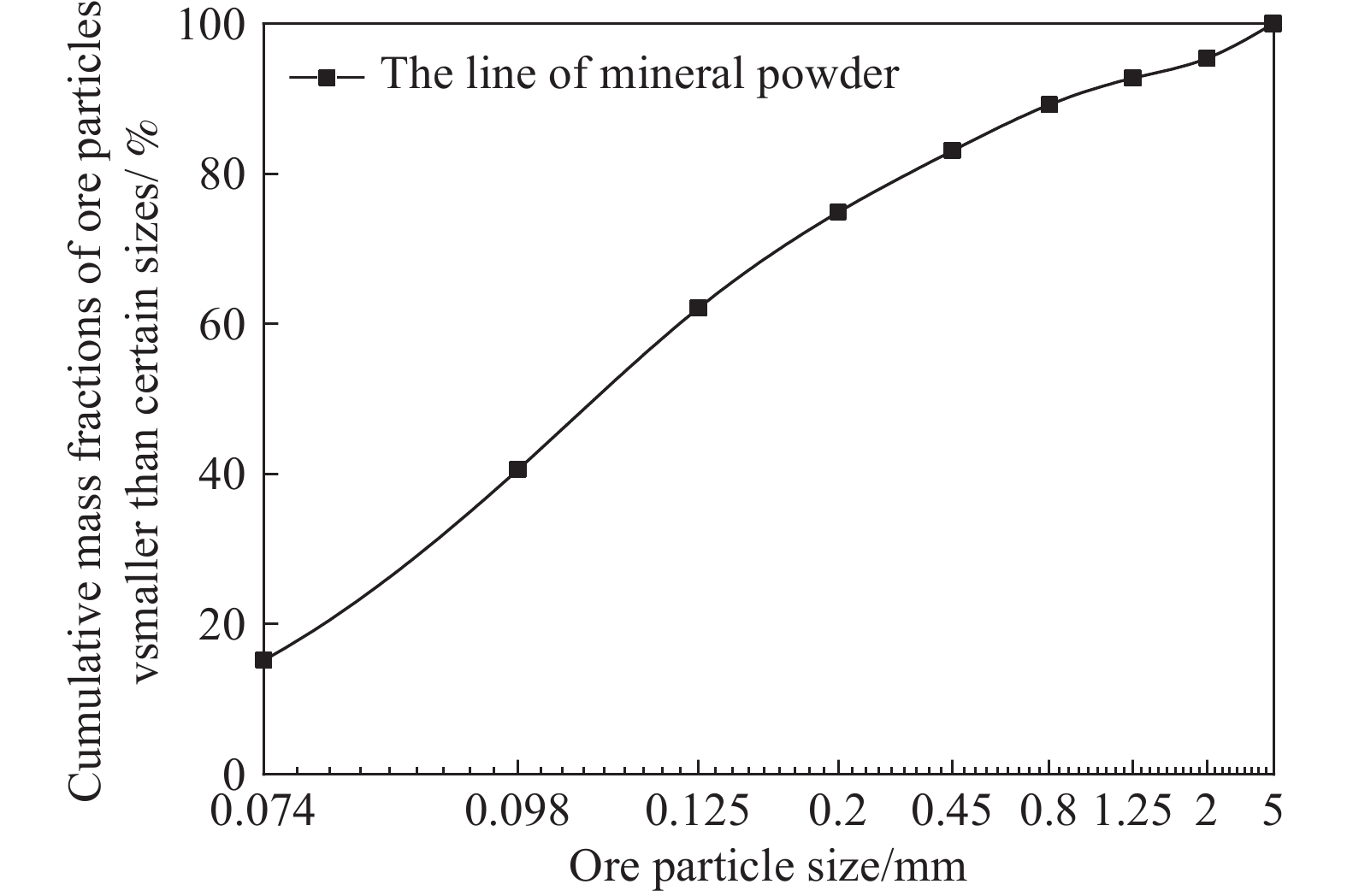
 下載:
下載:

